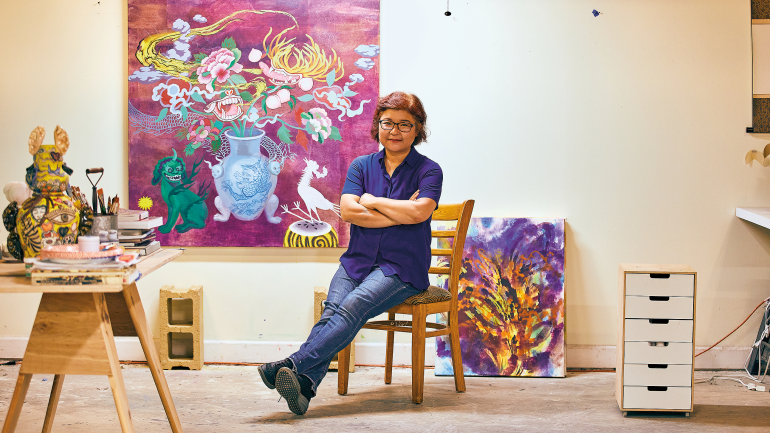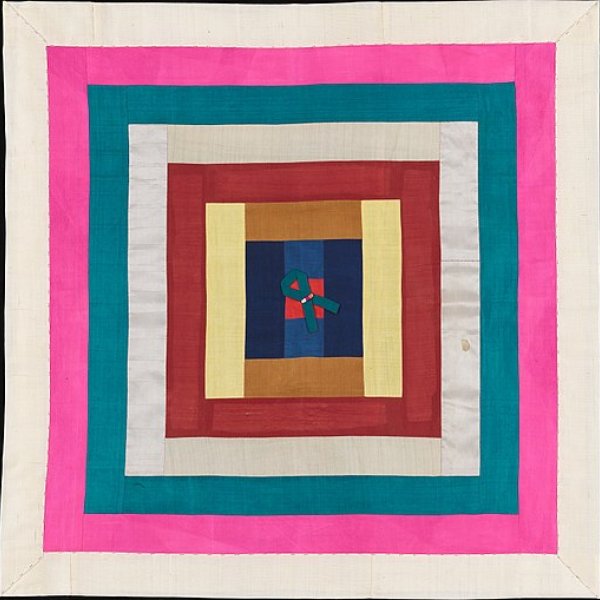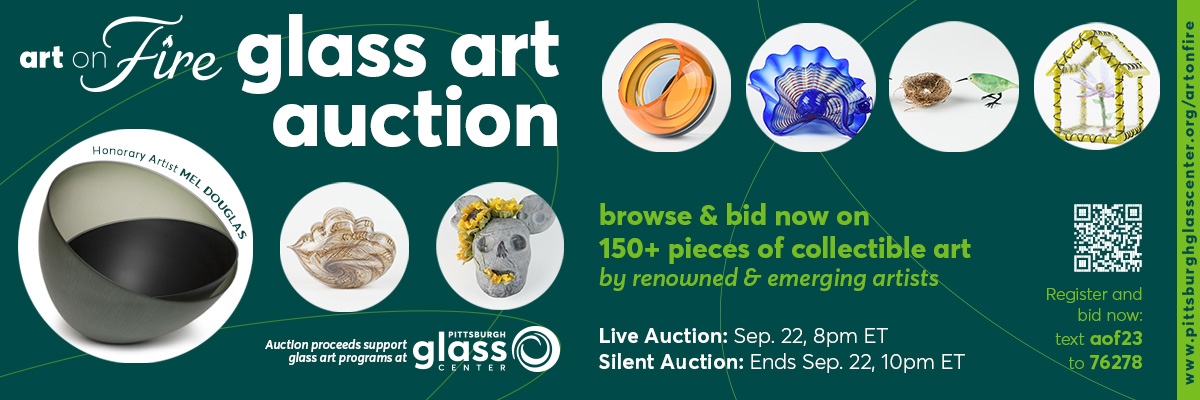The Queue: Jiha Moon
The Queue: Jiha Moon
Jiha Moon is always looking for new surfaces to decorate—and explore.
Jiha Moon is on a mission to make connections. Born and raised in Daegu, South Korea, and now living and working in Tallahassee, Florida, after years in Atlanta, Moon combines images, materials, and ideas from Korean and American culture into colorful paintings and ceramics. Her ceramics frequently take the form of nonfunctional vessels: handles made of clay banana peels and wontons adorn vases with gaping mouth holes and craggy shards. Bright colors, flirty emojis, slobbering dogs, fruits, and even Keanu Reeves decorate her sculptures. “I find the surface of objects a powerful place to communicate,” she says. Moon wrote about balancing family life and her artistic practice in “The Night Owl Downstairs” in the Fall 2023 issue of American Craft.
How do you describe your work or practice in 50 words or less?
My paintings are cultural landscapes, and my ceramic sculptures are hybrid portraits.
What are you working on right now?
I am working on a solo exhibition this November in Los Angeles at Shoshana Wayne Gallery. It is my big debut show on the West Coast, which I am excited about. I’m also working on a few pieces for Art Basel in Miami, with Derek Eller Gallery, and for Design Miami with Mindy Solomon Gallery.
Tell us about the first piece of ceramics that captivated you. What about it drew you in?
That is a very hard question. I have to say that it’s 19th century Joseon dynasty white porcelain. Moon jars with fewer drawings are really popular in general, but what I like are the ones with lots of drawings on their surfaces—satiric drawings of dragons and tigers with magpies. I love the more human, imperfect, and humorous quality of these vessels and their unique drawings.
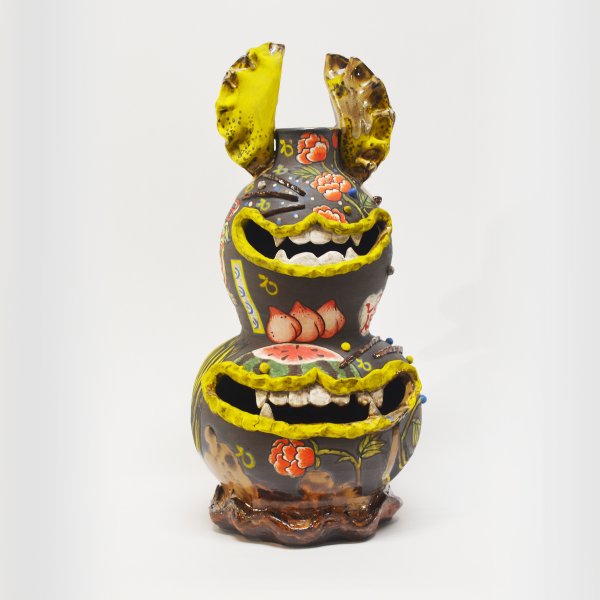
Jiha Moon, Haetae (yellow ears), 2022, stoneware, underglaze, and glaze, 15.5 x 6.5 x 7 in. Photo by Jiha Moon, courtesy of the artist and Derek Eller Gallery.
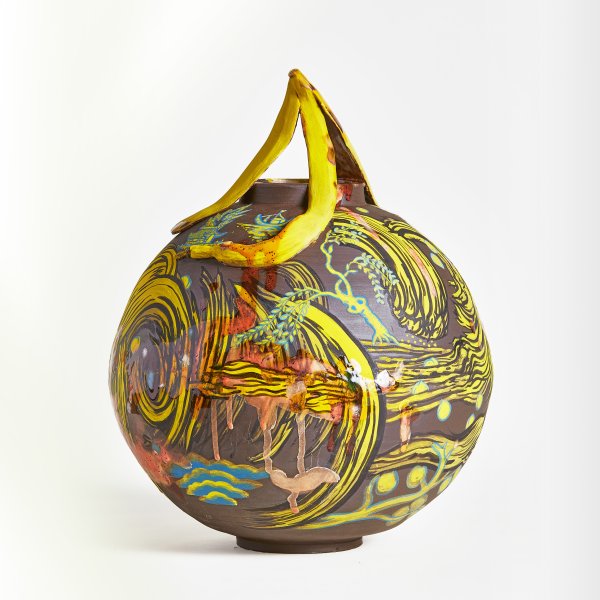
Jiha Moon, Yellowillow, 2021, stoneware, underglaze, and glaze, 15 x 11 x 11 in. Photo by Russell Kilgore, courtesy of the artist and Derek Eller Gallery.
In “The Night Owl Downstairs,” you mention that your parents collected scholar’s rocks, found rocks that resemble landscapes, the Buddha, or animals. What other kinds of objects were around your home growing up?
My parents have those rocks with bonsai, but both my mom and my grandmother are also amateur makers. They make curtains, cushions, and seasonal blankets for our family to use. I grew up watching women in the house always making stuff to decorate our environment, to bring joy to daily life.
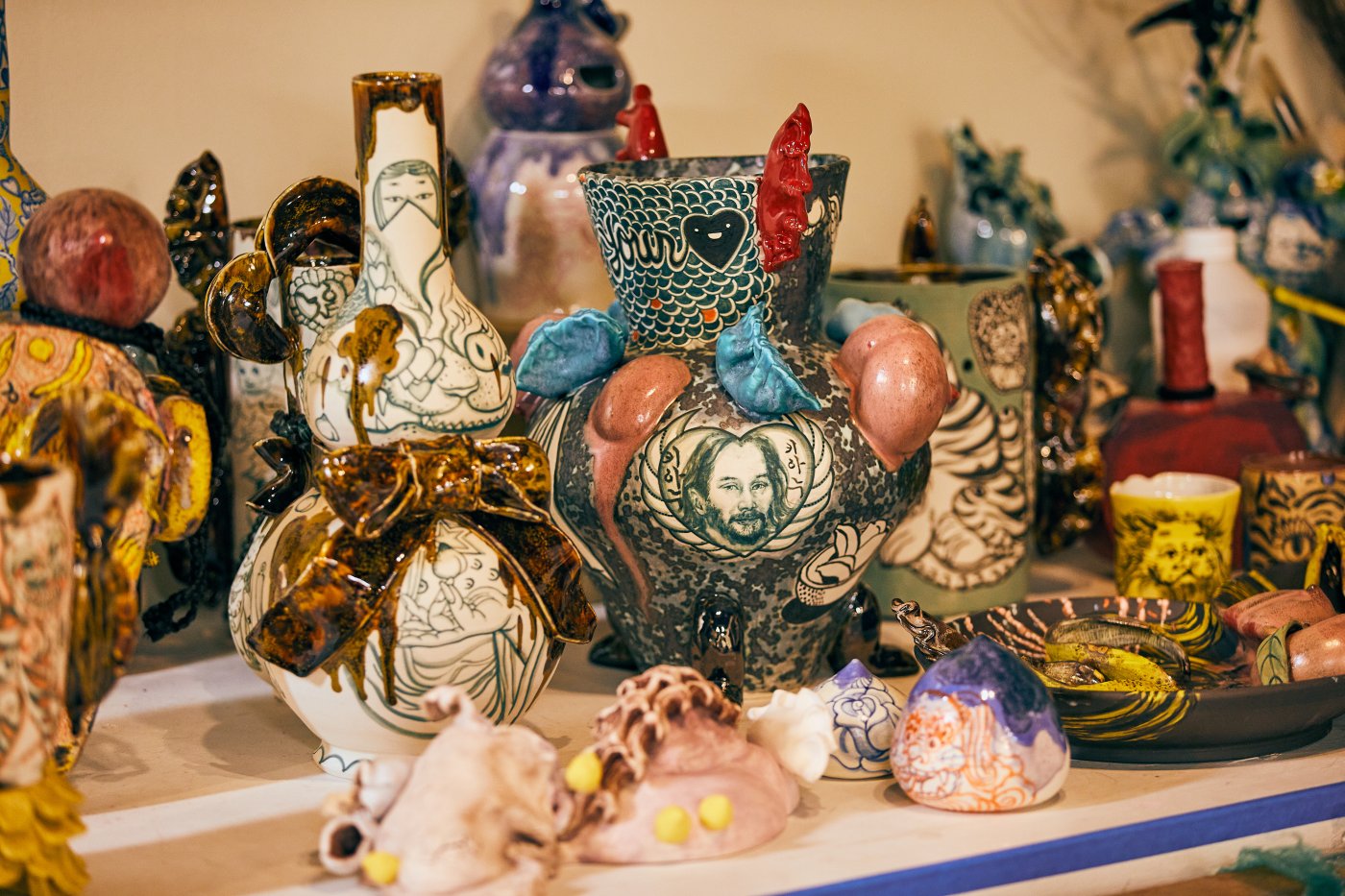
Bless Your Heart, Keanu, 2023, sits at the center of a collection of pieces in Moon’s studio. Photo by Ari Skin.
